Drop Back In High School ranks in the bottom 50% of all schools in Florida for overall test scores (math proficiency is bottom 50%, and reading proficiency is bottom 50%).
The percentage of students achieving proficiency in math was ≤10% (which was lower than the Florida state average of 58%). The percentage of students achieving proficiency in reading/language arts was 10-14% (which was lower than the Florida state average of 58%).
School Overview
School Type
Grades Offered
Grades 9-12
Total Students (13-14)
572 students
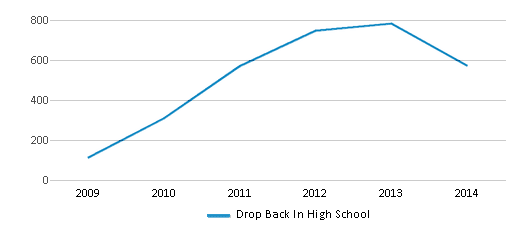
Total Classroom Teachers
n/a
School Rankings
Math Test Scores (% Proficient)
(12-13)≤10%
58%
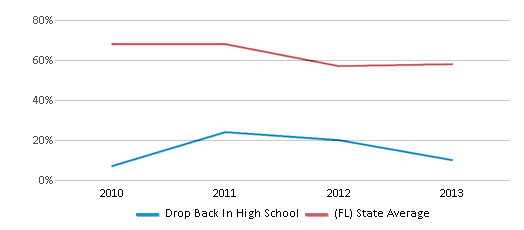
Reading/Language Arts Test Scores (% Proficient)
(12-13)10-14%
58%
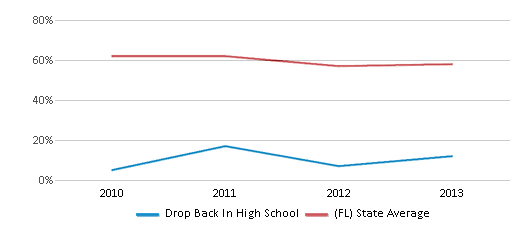
Student : Teacher Ratio
n/a
17:1
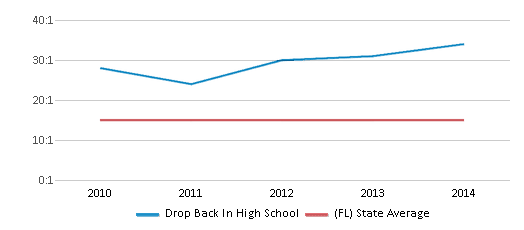
American Indian
(13-14)n/a
n/a
Asian
(13-14)1%
3%
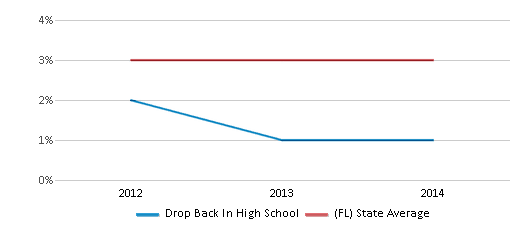
Hispanic
(13-14)29%
30%
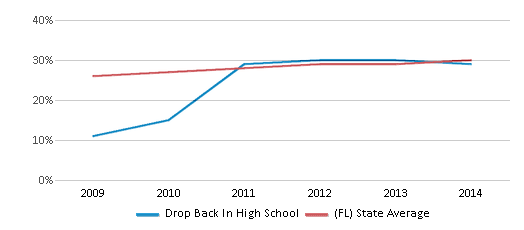
Black
(13-14)57%
23%
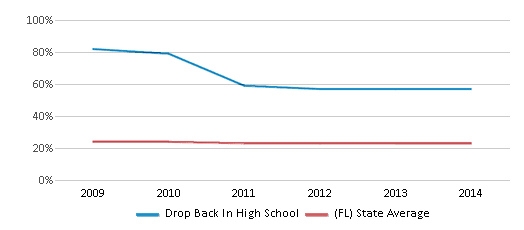
White
(13-14)12%
41%
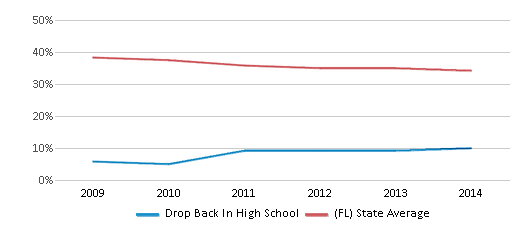
Hawaiian
(13-14)n/a
n/a
Two or more races
(13-14)1%
3%
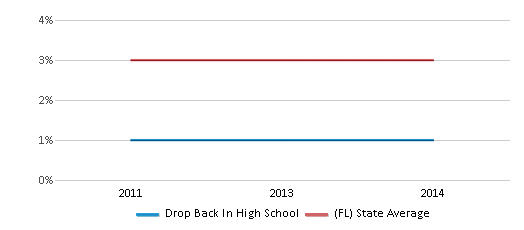
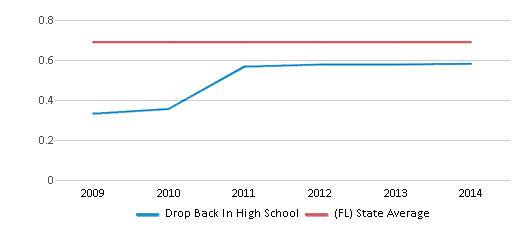
Graduation Rate
(14-15)≤1%
79%
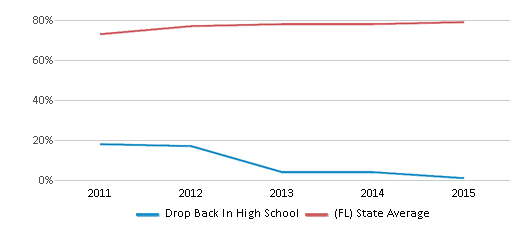
Eligible for Free Lunch (13-14)
49%
52%
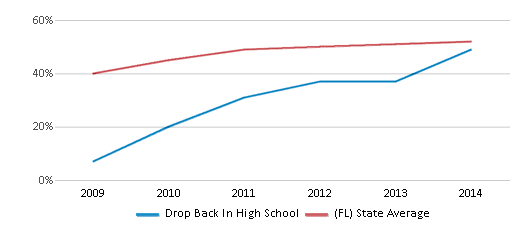
Eligible for Reduced Lunch (13-14)
2%
6%
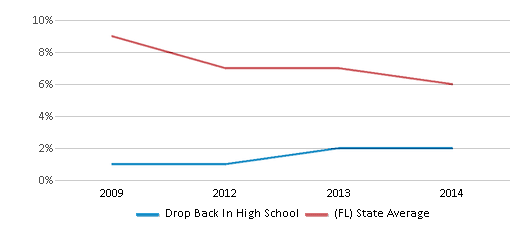
School Statewide Testing
School District Name
Source: National Center for Education Statistics (NCES), FL Dept. of Education
Frequently Asked Questions
What percent of students have achieved state testing proficiency in math and reading?
≤10% of students have achieved math proficiency (compared to the 58% FL state average), while 10-14% of students have achieved reading proficiency (compared to the 58% FL state average).
What is the graduation rate of Drop Back In High School?
The graduation rate of Drop Back In High School is 1%, which is lower than the Florida state average of 79%.
How many students attend Drop Back In High School?
572 students attend Drop Back In High School.
What is the racial composition of the student body?
57% of Drop Back In High School students are Black, 29% of students are Hispanic, 12% of students are White, 1% of students are Asian, and 1% of students are Two or more races.
What grades does Drop Back In High School offer ?
Drop Back In High School offers enrollment in grades 9-12
What school district is Drop Back In High School part of?
Drop Back In High School is part of Orange School District.
Recent Articles

Segregation in K-12 Education: The Jim Crow Era
This article delves into the segregated schooling system that existed during the Jim Crow Era, examining the disparities faced by African American students.
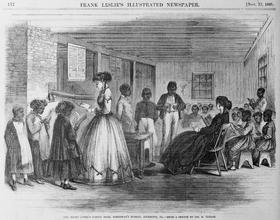
Segregation in K-12 Education: Post-Revolutionary War Era (1776-1865)
Step into the Post-Revolutionary War Era and explore the landscape of education in America during this transformative period. Journey through the tumultuous Reconstruction Era, a time of hope and immense challenges in the wake of the Civil War. Discover the resilience and determination of marginalized communities in establishing independent schools and advocating for educational equality amidst the challenges of this pivotal time in American public education.

December 16, 2024
Personalized Learning: Revolutionizing Education for the 21st CenturyExplore the revolutionary approach of Personalized Learning in K-12 education. This article discusses the benefits, challenges, and potential of tailoring education to individual student needs, incorporating technology and adaptive learning methods to prepare students for the 21st century.





